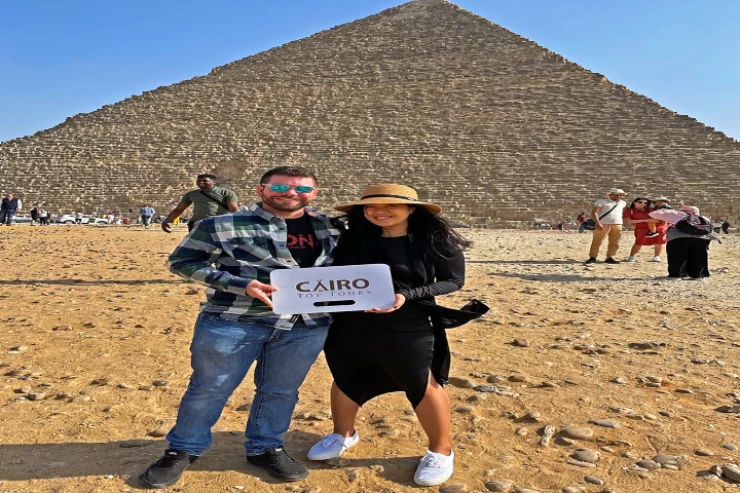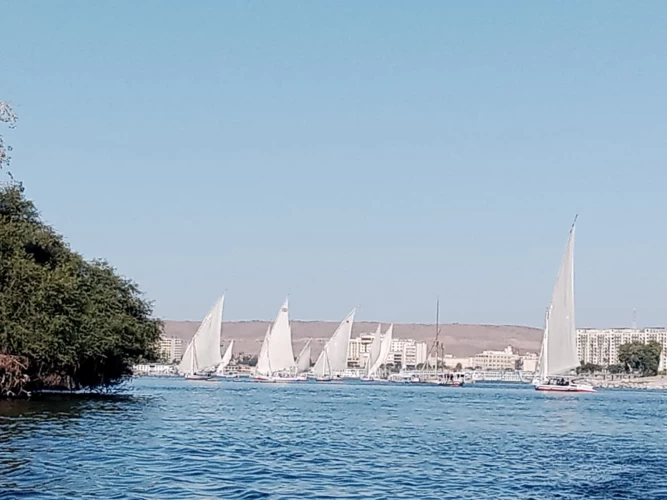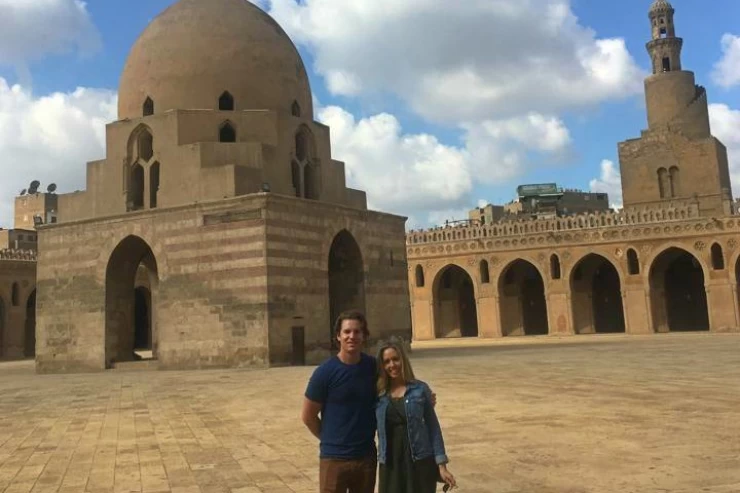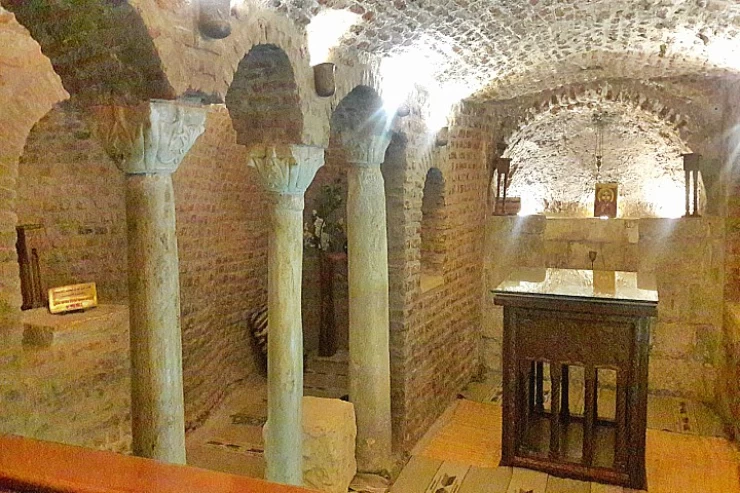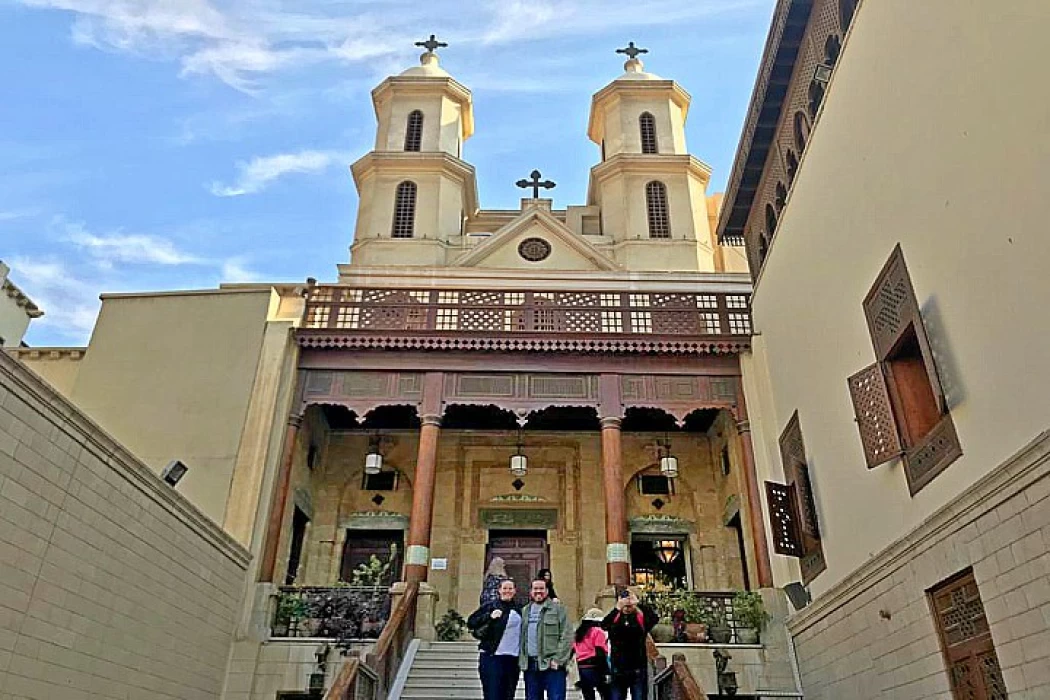
Cairo Copta | Cairo antigo
Cairo Copta Egipto
Até ao início da era islâmica no Egipto, o Cairo copta foi um verdadeiro reduto do cristianismo no Egipto, apesar disso, a maioria dos edifícios e igrejas actualmente visíveis foram construídos após a conquista do Egipto pelos muçulmanos.
Velho Cairo
O Cairo copta compreende a Fortaleza Romana da Babilónia, o Museu Copta, a Igreja Pendurada, a Igreja Grega de São Jorge e locais históricos, e muitas outras igrejas coptas, o que o torna um dos mais ricos locais históricos e coisas para fazer no Cairo. Acredita-se na tradição cristã que a Sagrada Família visitou esta área e ficou no local da Igreja de S. Sérgio e Baco (Abu Serga), e é por isso que as pessoas pensam que as suas Excursões do Dia do Cairo garantem que esta secção do Cairo Velho é vista. O Cairo copta foi um centro do cristianismo no Egipto até à era islâmica, embora a maioria dos edifícios contemporâneos das igrejas do Cairo copta tenha sido construída após a conquista islâmica do Egipto no século VII.
Quando os persas construíram um forte no Nilo, localizado no norte de Memphis. isso é prova de compensação na área já no século VI a.C. Os persas também construíram um canal do Mar Vermelho até ao Nilo (em Fustat). A aldeia persa chamava-se Babilónia, evocativa da antiga cidade ao longo do Eufrates, e ganhou importância enquanto a cidade vizinha de Memphis enfraquecia, tal como Heliopolis. A Babilónia e o seu povo foram na sua maioria esquecidos durante todo o período Ptolemaic.
Tradicionalmente, a Sagrada Família percorreu a área durante todo o Voo para o Egipto, pedindo refúgio a Herodes. Além disso, considera-se que o cristianismo começou a espalhar-se no Egipto quando São Marcos chegou a Alexandria, tornando-se o primeiro Patriarca, embora a religião tenha permanecido escondida durante o domínio dos romanos. Quando a população local começou a organizar-se para uma revolução, os romanos, reconhecendo a importância da região estratégica, assumiram a fortaleza e relocalizaram-na nas proximidades como a Fortaleza da Babilónia. Trajano restabeleceu o canal para o Mar Vermelho, causando um comércio elevado, embora o Egipto tenha permanecido um remanso no que diz respeito aos romanos.
Desfrute de uma viagem completa ao Cairo copta quando planear qualquer viagem ao Egipto ou da nossa variedade de viagens a partir do Cairo.
Sob os romanos, São Marcos e os seus seguidores poderosos conseguiram transformar uma divisão abundante da população, de fés ateístas ao cristianismo. À medida que as comunidades cristãs no Egipto cresciam cada vez mais, eram constrangidas ao exílio pelos romanos, sob o imperador Diocleciano por volta do ano 300 d.C., e os abusos continuaram após o Édito de Milão que proclamou a tolerância religiosa. A Igreja Copta foi mais tarde isolada da igreja dos romanos e dos bizantinos. Seguindo o domínio do Arcadius (395-408), várias igrejas foram estabelecidas no Antigo Cairo. Nos primeiros anos do domínio árabe, os coptas foram autorizados a construir várias igrejas dentro da antiga área da fortaleza do Velho Cairo.
No Cairo copta, em 1115 anos, foi criada a Sinagoga Ben Ezra, no que era anteriormente uma igreja copta construída no século VIII. Os Coptas precisavam de vendê-la, para angariar fundos para pagar impostos a Ibn Tulun.
O Cairo copta acolheu a sede do Papa Ortodoxo Copta de Alexandria no século XI d.C., que está historicamente localizada em Alexandria. À medida que as autoridades legais se mudaram de Alexandria para o Cairo após a invasão árabe do Egipto durante todo o mandato do Papa Christodolos, o Cairo exibiu a residência fixa e real do Papa copta no Cairo copta em 1047, na Igreja Pendurada.
O Museu Copta foi criado em 1910, e alberga os exemplos mais importantes da arte copta do mundo.
Igrejas:
Igreja de Santa Maria (Haret Elroum)
Igreja de São Mercurius
Igreja Saints Sergius e Bacchus (Abu Serga)
A Igreja Enforcada
Igreja da Virgem Santa (Babilónia El-Darag)
Igreja de Santa Bárbara
A Igreja de Saint Menas
Convento e Igreja de São Jorge (Cairo)
Mosteiro e Igreja de São Jorge (Ortodoxo Grego)
Excursões do Dia do Cairo e Pacotes de Viagens do Egipto Incluindo o Cairo Copta e muitas outras maravilhas arquitectónicas que o Egipto tem para oferecer: As maravilhas do turismo em solo egípcio são os frutos que a Cairo Top Tours lhe traz através dos seus agentes no terreno e/ou online.
Se você tiver curiosidade sobre a cidade de Gizé e quiser ver como ela é e o que aconteceu lá no passado, poderá encontrar muitas informações e fotos em "Is Traveling To The White Desert Safe?". Isso o ajudará a saber mais sobre Gizé.
Coptic Cairo is located in the center of the vast metropolis of Egypt. As the names go, Coptic Cairo is the district replete with history and antiquities—more so, stories of this country’s prominence in Christianity. The district popularly referred to as Old Cairo is one of the oldest parts of the city and is one of the best illustrations of the great melting pot that is the country’s history. People come here to appreciate the mixtures of obvious architectures of all religions—Christianity, Judaism, and Islam. This is to explain more what Coptic Cairo has to offer any tourist who wishes to visit Egypt and not just to see the Pyramids.
A Walk Through History: The Origins of Coptic Cairo
Coptic Cairo is the memory of the period when the settlement was referred to as Babylon the Great, the Roman Empire's fortress on the Nile River. As early as the 4th century, this region became a great hub for Christianity and scholarship. The transformation of this area into a religious center is attributed to the advancement of Christianity in Egypt which can be dated back to the coming of St. Mark in Alexandria in about 42 AD. Christianity expanded, leading to the construction of many churches within Egypt, with Coptic Cairo being the first.
Copt is a name that is given to the Christians from Egypt who belong to the Coptic Orthodox Church, whose doctrine is considered to have been founded by the apostle Mark. Coptic Cairo is a time waiting to be unearthed since it harbors many ancient churches, convents, and other buildings vital for the study of the growth of Christianity in Egypt and the area around it.
1. The Hanging Church (Saint Virgin Mary's Coptic Orthodox Church)
The Hanging Church, which gets its name from the position it sits in, on the upside of the Roman gatehouse of Babylon, is one of the most remarkable and magnificent landmarks in Coptic Cairo. Constructed in the third century, the church is one of the ancient churches in Egypt and is very dear to the Coptic community. The interior design of the church is unique, as it has a wooden ceiling that is crafted like Noah’s Ark, the walls are beautifully detailed, and there is an iconostasis. Visitors are treated to 110 icons depicting biblical scenes and Coptic saints, the oldest of which dates to the 8th century.
2. The Church of Sts. Sergius and Bacchus
Another olden-era church targets modern young and old Christians and lots of tourists, as it is said to have been erected in the cave where the Holy Family hid by the time they were headed to Egypt. The Church of St. Sergius and Bacchus has a mystical aura and simple beauty, which makes one feel immersed in the time of early Christians in a very strong way. The crypt where the Holy Family is said to have taken shelter is accessible to visitors, which provides a striking contrast between the ancient stories of Egypt and the Bible.
3. The Ben Ezra Synagogue
The Ben Ezra Synagogue is one of the most ancient Jewish worship centers in Egypt and is living proof that diverse religious communities may peacefully co-exist in the country. Local tradition maintains that the very synagogue is built on the ground where the Pharaoh`s daughter discovered Moses in the bulrushes. Once a Coptic church, it was turned into one in the 9th century and is an exquisite example of architectural design, comprising carved wooden panels, lovely murals on ceilings, and other historic pieces.
4. The Coptic Museum
Coptic Museum is a must-visit place if one feels like exploring more on the history of Coptic Christianity. Established in 1910, it boasts the largest collection of artifacts and artwork belonging to Copts in the world, including decorated books, clothes, and Coptic icons. This museum also opens up the world to many imaginations about the lives of early Egyptians—Christians in particular—their arts, as well as Coptic art that evolved in different climates interacting with other cultures.
5. The Monastery and Church of St. George
St. George's Church is an exceptional place, as it is one of the rare surviving round-shaped churches in the Middle East. The Greek Orthodox Church here was believed to have been erected in the 10th century; however, some sources even suggest that the primary edifice was erected in the sixth century. The monastery and church are dedicated to Saint George, who is one of the most revered and cherished saints in Christianity, and they still serve the local Christians as places of worship. Also, every April, there is a feast devoted to Saint George, which welcomes many pilgrims all around the year.
On its own, Coptic Cairo is more than a place of worship; it is a representation of the multilayered legacy of Egypt. The area is a perfect example where different practices, traditions, and beliefs, including Christianity, Judaism, and Islam, have interacted within a small radius for centuries. A church, a mosque, and a synagogue are often located within close range of each other, which hints at the existence of wonderful stories about these places and the people in them.
Coptic Cairo illustrates well the enduring spirit and flexible nature of the Copts, who have been able to practice their faith and customs even in the face of changes that have rocked Egypt over the years. This is not just a tourist attraction; it is a zone with schools, markets, and even houses, which maintains a character that is dynamic and expanding.
Dress Appropriately: As a lot of the places of interest are of religious significance, it is important that one dress appropriately. This implies that one should wear clothes that cover their shoulders and knees.
Management of Time: Coptic Cairo is an extensive area with lots of things to see, and many of the places close by early evening. Browse around every place for a couple of hours and enjoy the ambiance without the pressure of time in the views.
Photography: One or two of their chapels and the Coptic Museum may not allow the taking of pictures; hence, it is advisable to seek the courtesy of asking before taking any pictures.
Hire a Professional Guide: Every destination has its own story and history, and every traveler ought to understand that, so it’s better to hire professionals. Their service will be needed as they will explain things like the signs, customs, and stories that cannot be seen or heard by ordinary visitors.







